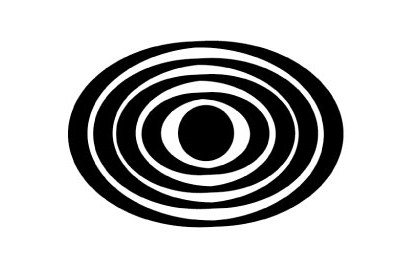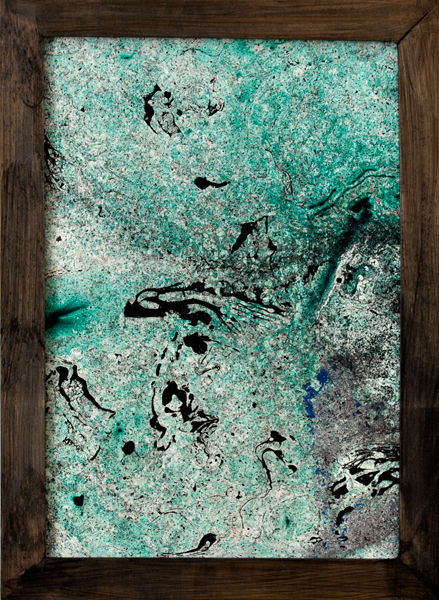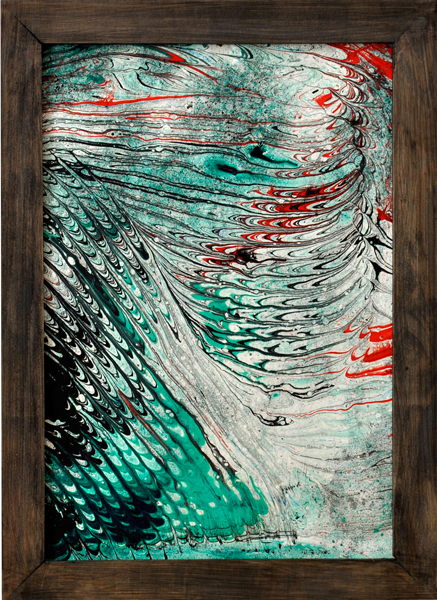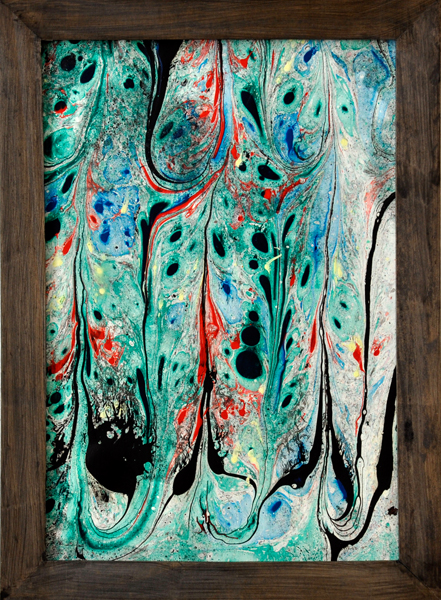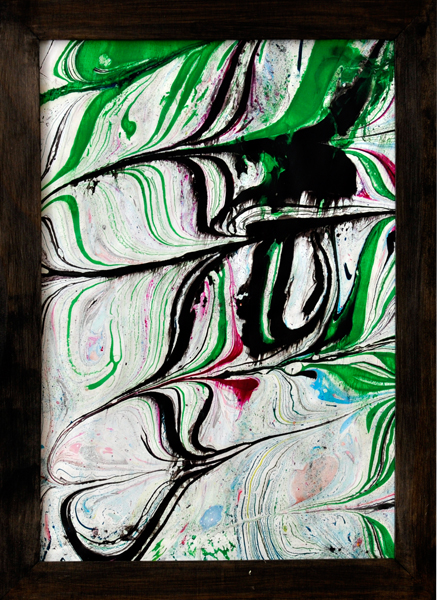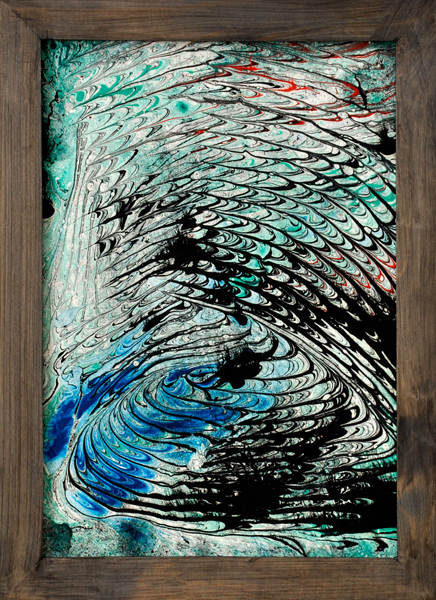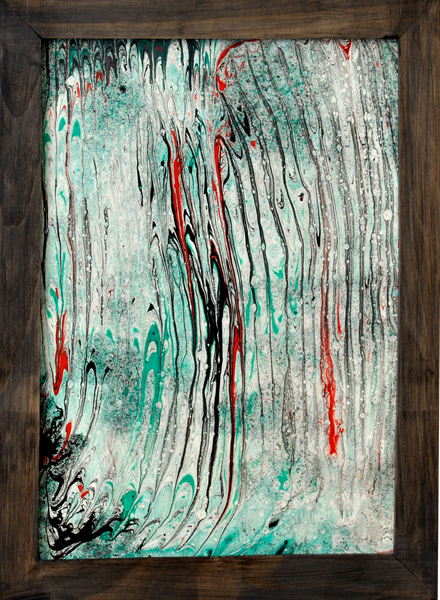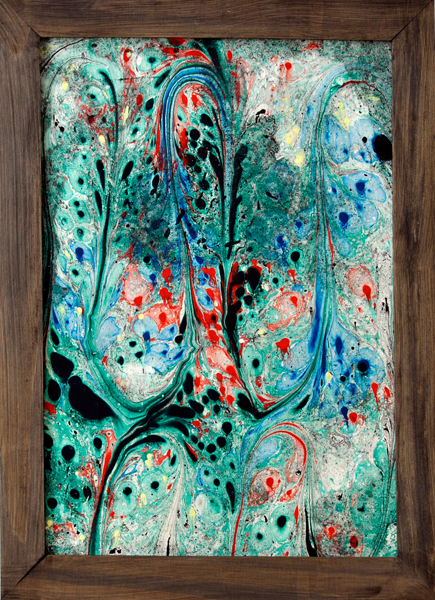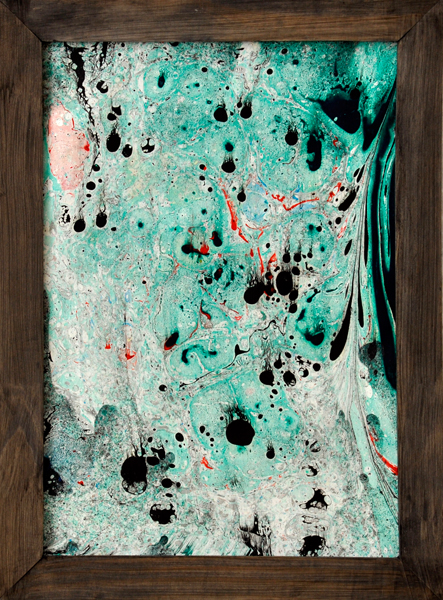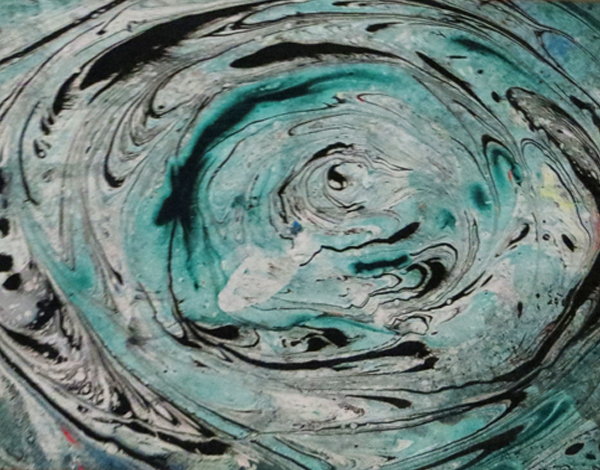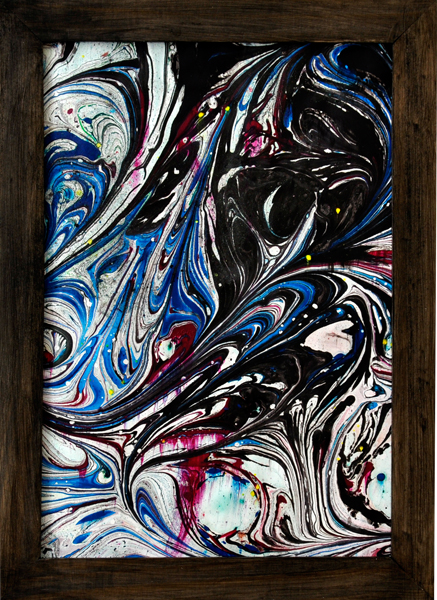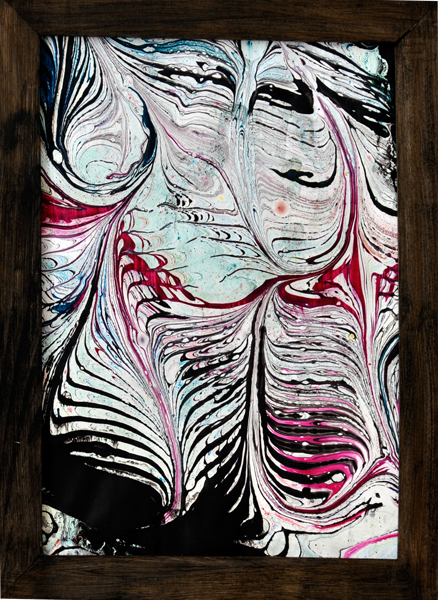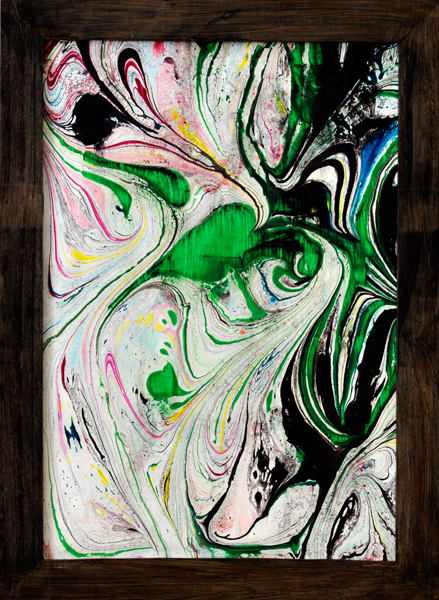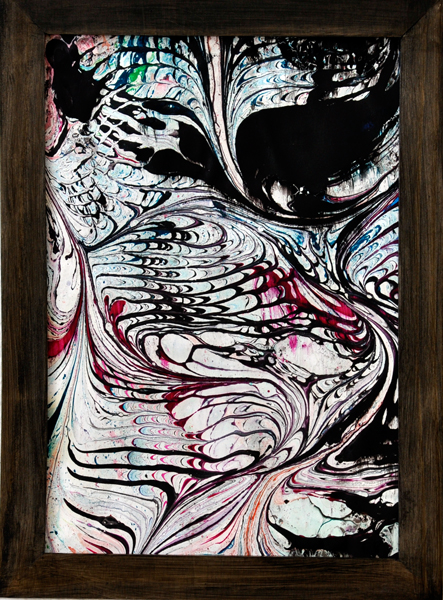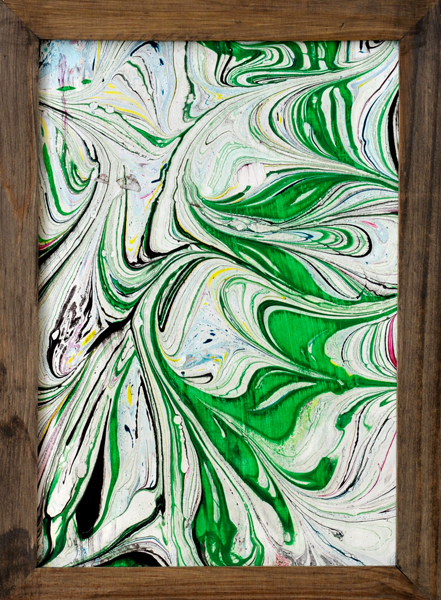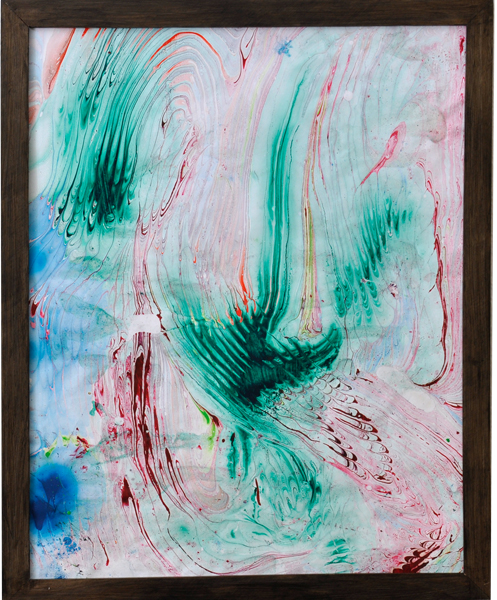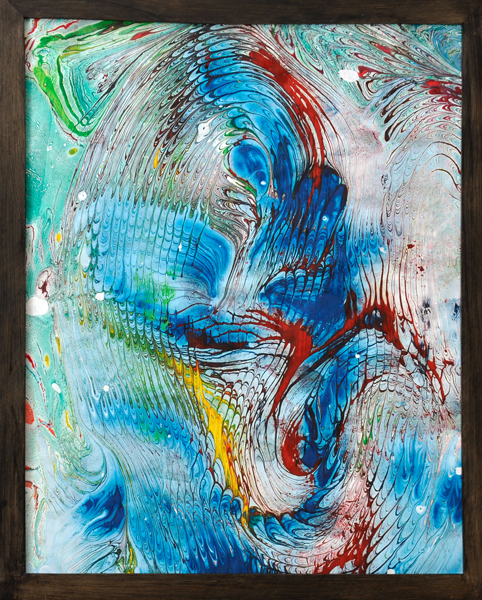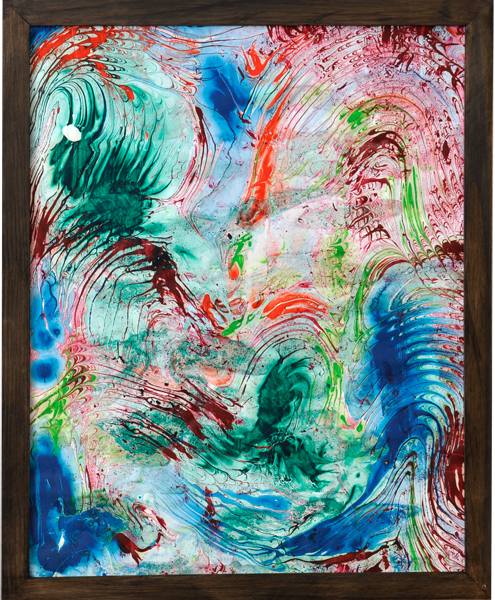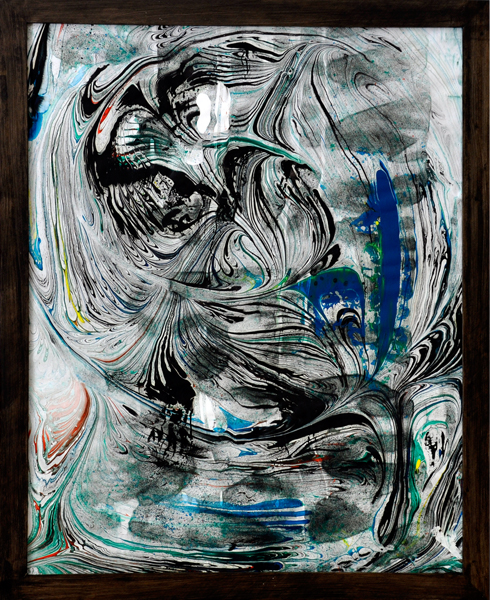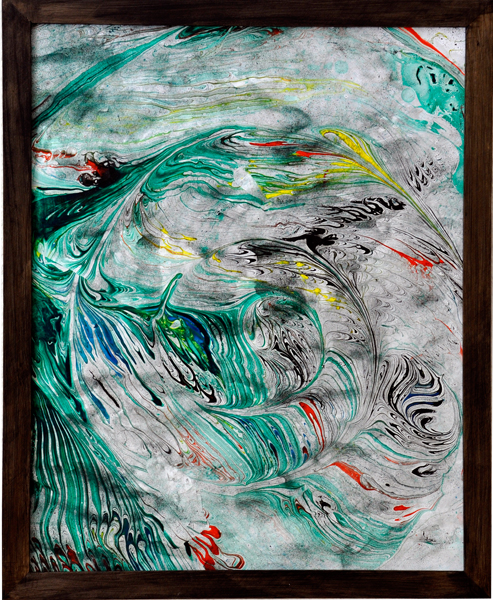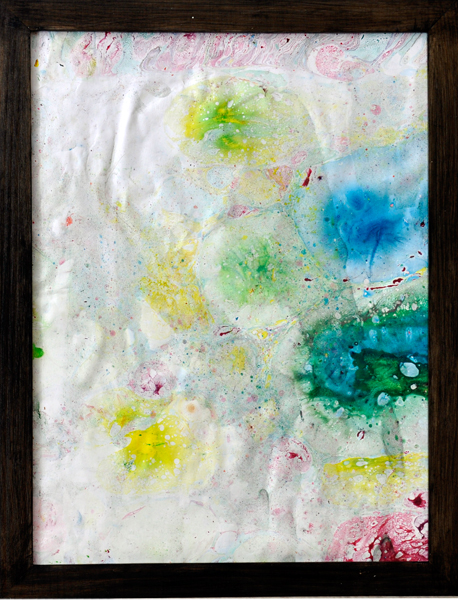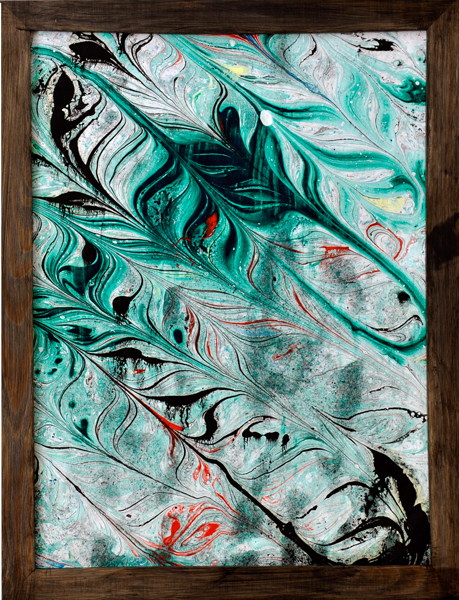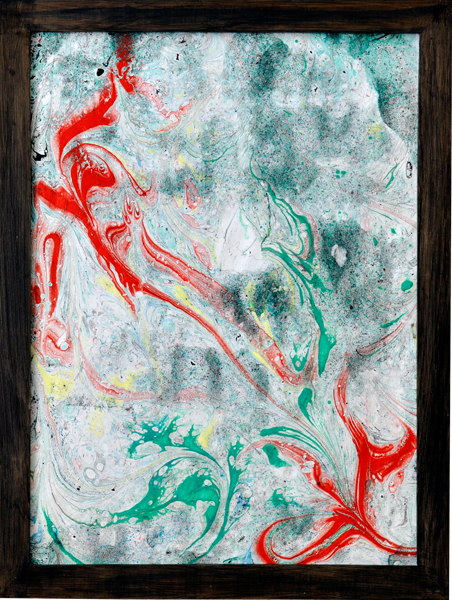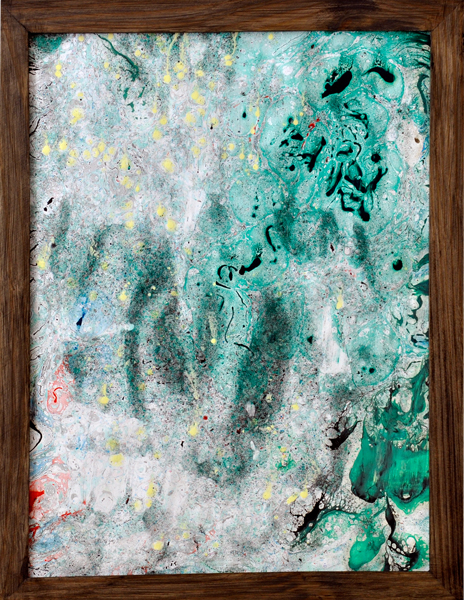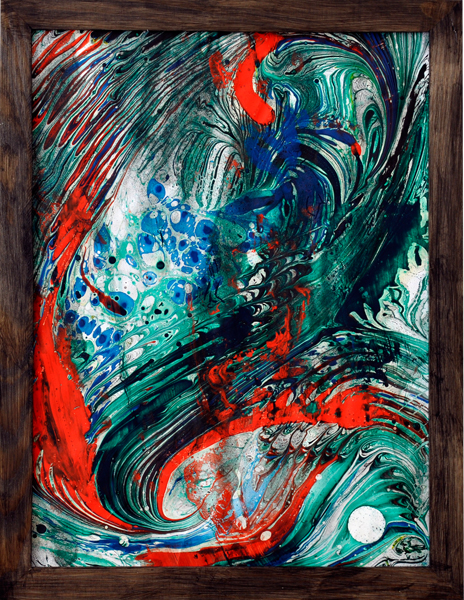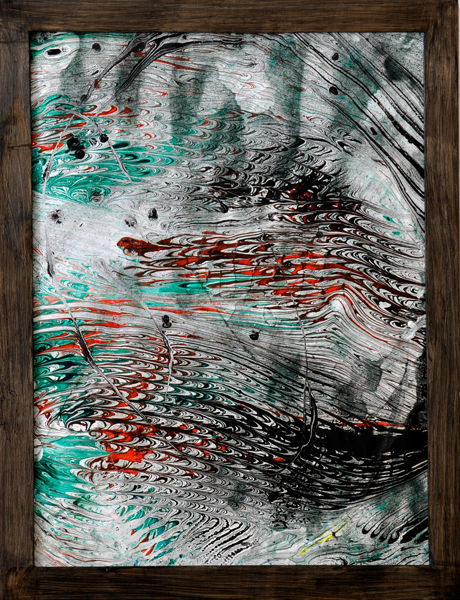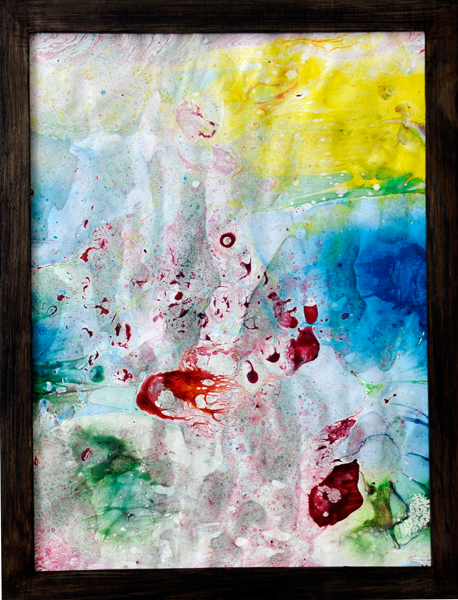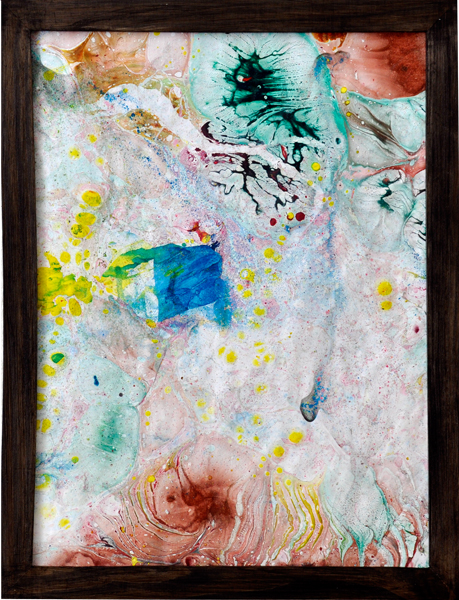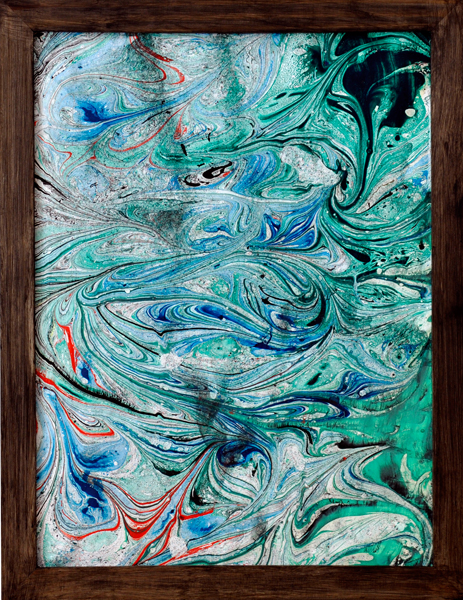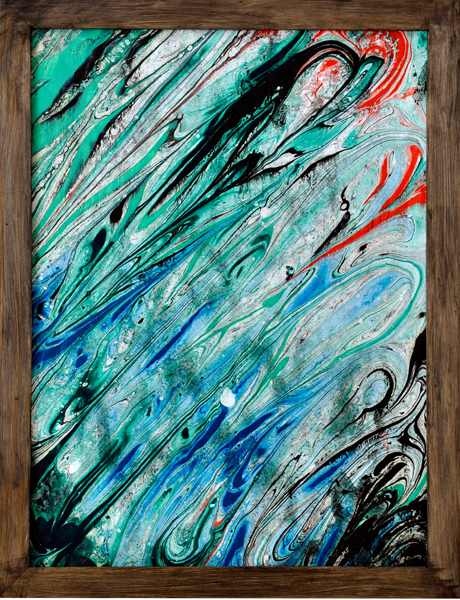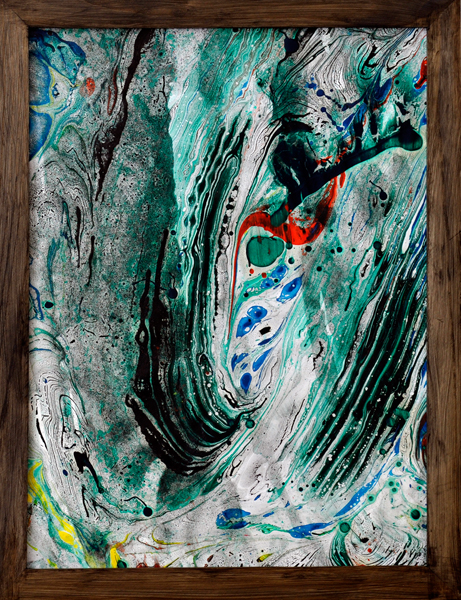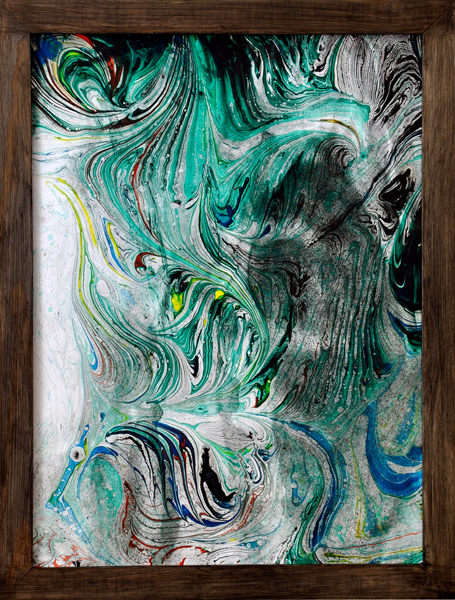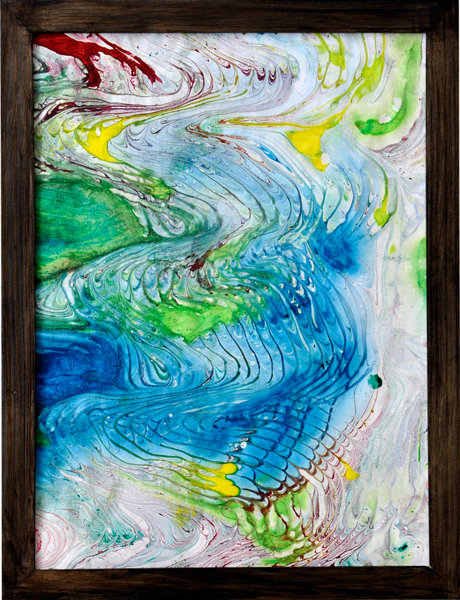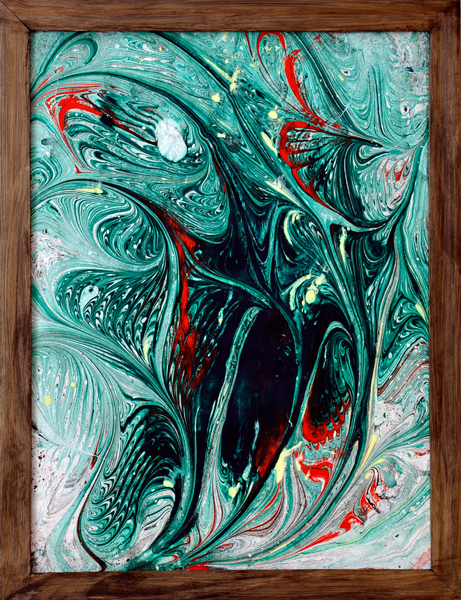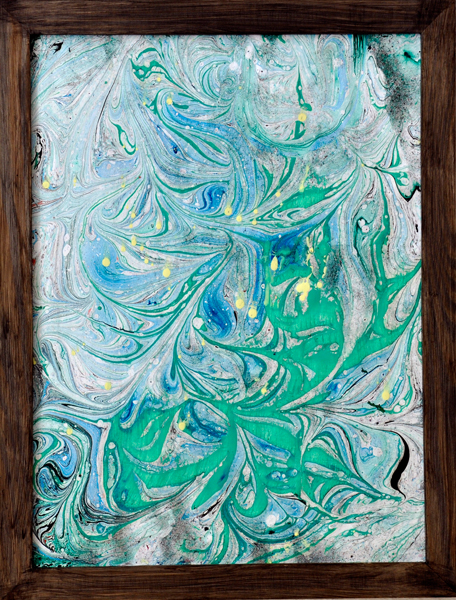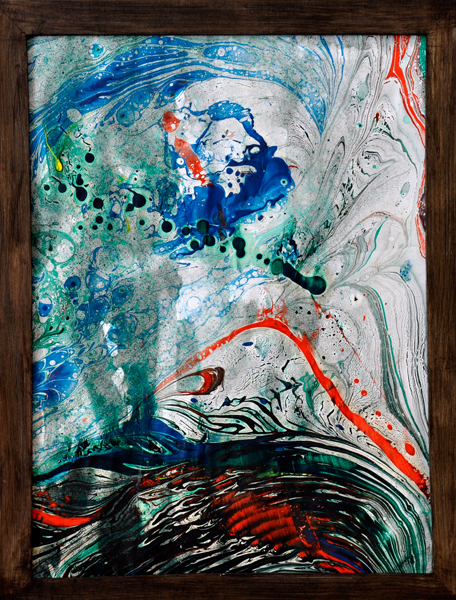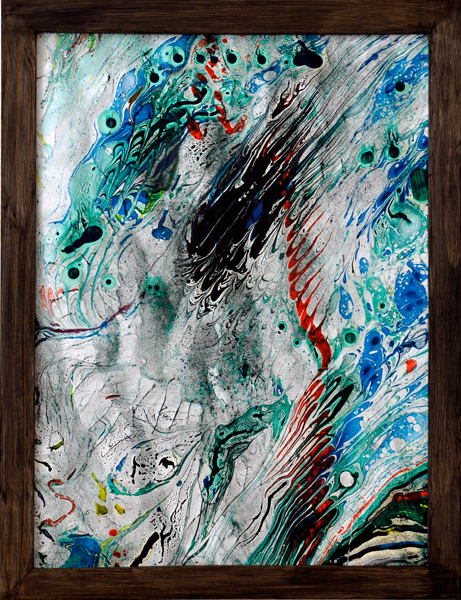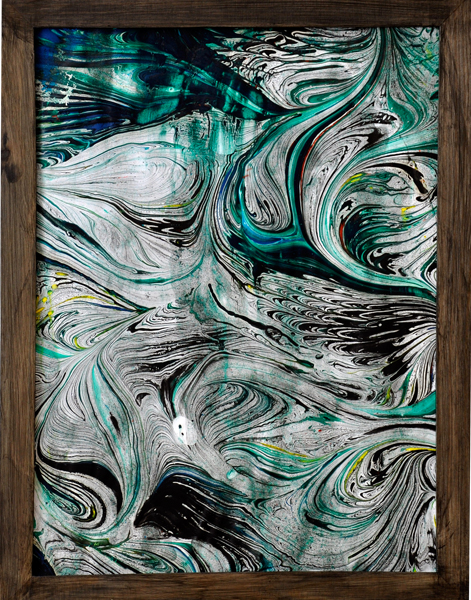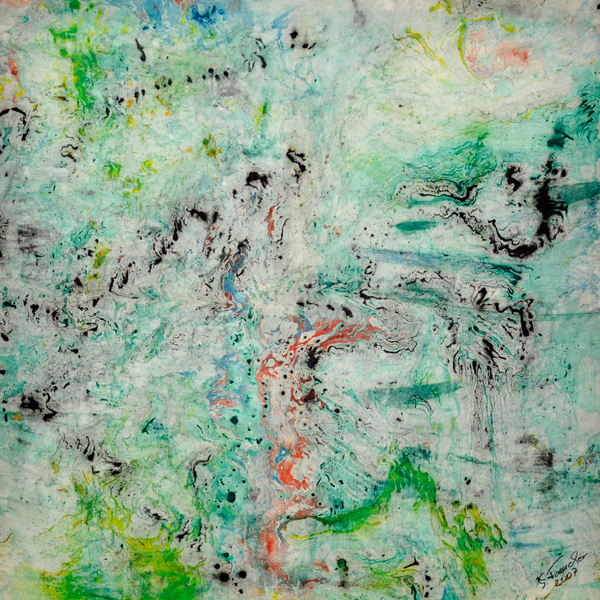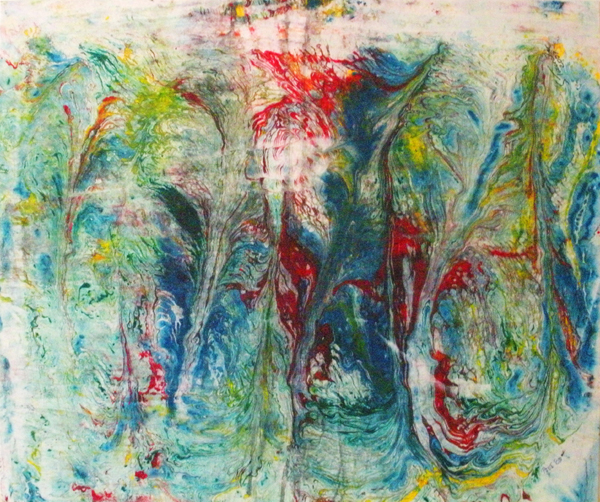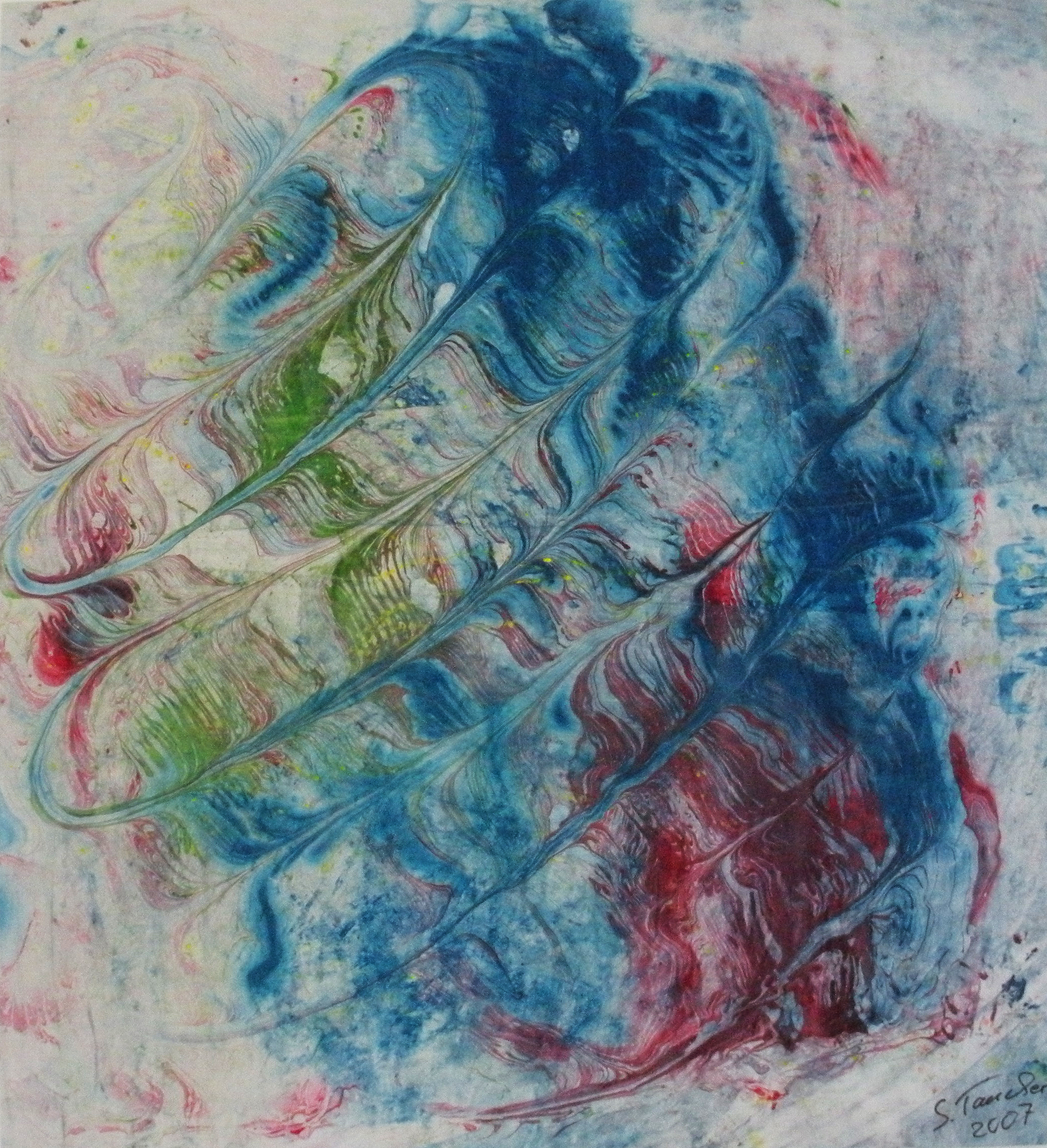Show: Marblings
Serie 1.1 – 1.11. (alle Bilder mit Rahmen/all pictures are framed)
Serie 1.1.
Öl auf Papier/Oil on paper, 21 x 30 cm, 2007 (280,- Euro)
Serie 1.4.
Öl auf Papier/Oil on paper, 21 x 30 cm, 2007 (280,- Euro)
Serie 1.6.
Öl auf Papier/Oil on paper, 21 x 30 cm, 2007 (280,- Euro)
Serie 1.8.
Öl auf Papier/Oil on paper, 21 x 30 cm, 2007 (300,- Euro)
Serie 1.10.
Öl auf Papier/Oil on paper, 21 x 30 cm, 2007 (360,- Euro)
Serie 4.5 – 4.17. (alle Bilder mit Rahmen/all pictures are framed)
Serie 4.5.
Öl auf Papier/Oil on paper, 21 x 30 cm, 2007 (-verschenkt/give away-)
Serie 4.7.
Öl auf Papier/Oil on paper, 21 x 30 cm, 2007 (300,- Euro)
Serie 4.10.
Öl auf Papier/Oil on paper, 21 x 30 cm, 2007 (360,- Euro)
Serie 4.15.
Öl auf Papier/Oil on paper, 21 x 30 cm, 2007
Serie 1.3.
Öl auf Papier/Oil on paper, 21 x 30 cm, 2007 (300,- Euro)
Serie 1.5.
Öl auf Papier/Oil on paper, 21 x 30 cm, 2007 (280,- Euro)
Serie 1.7.
Öl auf Papier/Oil on paper, 21 x 30 cm, 2007 (280,- Euro)
Serie 1.9.
Öl auf Papier/Oil on paper, 21 x 30 cm, 2007 (360,- Euro)
Serie 1.11.
Öl auf Papier/Oil on paper, 21 x 30 cm, 2007 (300,- Euro)
Eye
Öl auf Papier/Oil on paper, 30 x 30 cm, 2007 (unverkäflich/unsaleble)
Serie 4.6.
Öl auf Papier/Oil on paper, 21 x 30 cm, 2007 (300,- Euro)
Serie 4.8.
Öl auf Papier/Oil on paper, 21 x 30 cm, 2007 (280,- Euro)
Serie 4.12.
Öl auf Papier/Oil on paper, 21 x 30 cm, 2007 (300,- Euro)
Serie 4.16.
Öl auf Papier/Oil on paper, 21 x 30 cm, 2007 (300,- Euro)
Marmorierungen
Es gibt keine Zufälle!?
Die Marmorierung ist eine komplizierte Technik mit Leim und Ölfarben auf unterschiedlichen Malgründen, wie Papier, Leinen, Stofftaschen, T-Shirts, …
Ursprünglich gelangte die Technik um 500 aus China in den vorderen Orient (Türkei, Persien), wurde im 17. – 18. Jh. vor allem als Vorsatzpapier bei der Buchbinderei verwendet, und wurde u.a. in den 60er/70er Jahren als Rauminstallation an Wände projeziert. Die entstandenen Buntpapiere sollten dabei den farbigen Marmor imitieren. Die entstandenen Buntpapiere zählen zu den schönsten und anspruchsvollsten Buntpapieren.
Es gibt keine Zufälle:?
Für mich war das Arbeiten mit dieser schönen und alten Technik der Beweis, das es keine Zufälle gibt. Der Künstler nimmt bewusst wie unbewusst – also kreativ – in komplexer Art und Weise spezielle Farben und Farbkombinationen und entscheidet selbst nach freiem Willen und mit Liebe, wo welche Farbe und wie platziert wird, mit dem Wissen und der Erkenntnis über mögliche Reaktionen. Mögliche Unvorhersehbarkeiten entstehen lediglich dadurch, das der Mensch nicht perfekt ist und nicht die volle Kontrolle über sich und sein Umfeld hat, wie eine Maschine. Das ist auch gut so. So ist der Mensch, und so ist die Natur der Dinge. Der Mensch ist ein Teil der Natur und ist auch nicht zufällig. Mikro- und Makrokosmos entstehen auch nicht zufällig, sondern haben ihre bestimmten Gesetzmässigkeiten im Grossen wie im Kleinen.
Informationen zum Zufall
Ein Zufall ist das, was ohne erkennbare Ursache und ohne Absicht geschieht; ein mögliches Ereignis, das eintreten kann aber nicht muss, wobei irgendeine Situation immer zustande kommt und eine andere auch möglich ist. Der Zufall ist ein nicht erklärbares Phänomen, unberechenbar und unvorhersehbar. Auch in den folgenden Wissenschaften wird der Zufall untersucht:
- in der Mathematik: mit Wahrscheinlichkeitsrechnung, Stochastik, Zufallszahlen, …
- in der Physik: mit Untersuchungen über zufällige oder eindeutig vorhersehbare Prozesse
- in der Psychologie: mit Verstehen über menschliche Erwartungen von Geschehnissen und Reaktionen
- in der Soziologie: mit Gesellschaftsstudien sozio-historischer Entwicklungen
- in der Philosophie: Fragen über Zufallsprozesse unserer Welt, Chaosforschung
Es herrschen ambivalente Meinungen:
- Der Astrophysiker Steven Klein kam zu der Auffassung, dass es keinen Zufall gibt, dass es lediglich unbestimmte und unbeeinflussbare Faktoren gibt.
- Die Quantenphysik geht z.Z. vor allem davon aus, dass es reine Zufälle gibt, da z.B. der radioaktive Zerfall eines Atomkernes zeitlich nicht vorhersehbar ist. Hierbei kann man jedoch auch davon ausgehen, dass die Wissenschaft noch nicht fähig ist, noch nicht genug Erfahrung und Wissen hat, um diese Gesetzmässigkeiten zu erkennen. Oder eine Theorie behauptet, dass es im Makrokosmos Zufälle nicht gibt, nur im Mikrokosmos (was mir nicht logisch erscheint)
- In der Philosophie schliesst die These, dass es keinen Zufall gibt den freien Willen des Menschen aus, da sonst alles vorhersehbar wäre; andererseits wenn es Zufälle gibt, gibt es erst recht keinen freien Willen, da dann jede Entscheidung genommen ist und „nur“ zufällig ist. ( Meine Meinung: wenn ich mich entscheide ist es mein freier Wille und kein Zufall! Meine Entscheidung von Morgen kann ich heute nicht vorhersehen.)
- Auch für Immanuell Kant gibt es einen Widerspruch zwischen Vernunft und Unbestimmtheit des Willens. Die Freiheit des Menschen ist nicht zu retten im Gegensatz zur Willensfreiheit.
So sind sich die Wissenschaften über dieses Thema auch nicht einig. In solchen Fällen versagen noch die Erklärungsmodelle. Hier beginnt die Philosophie, die Kunst, das Experiment und die Forschung.
Text: Silvia Taucher, 2007
Marbling
There are no coincidences !?
The marbling is a complicated technique with glue and oil paints on different painting surfaces such as paper, canvas, cloth bags, T-shirts, …
Originally got the technology to 500 from China in the Near East (Turkey, Persia), was in the 17th-18th Century. Especially as endpapers in bookbinding used and was, inter alia, projected in the 60s / 70s as a spatial installation in walls. The resulting decorated papers should configure itself to mimic the colored marble. The resulting decorated papers are among the most beautiful and challenging stained papers.
There are no coincidences:?
For me, working with this beautiful and ancient art of the evidence that there are no coincidences. The artist takes conscious as unconsciously – so creative – in complex fashion special colors and color combinations and decide to free will and love where what color and how placed, with the knowledge and the knowledge of possible reactions. Possible unpredictability arise only in the man is not perfect and does not have full control about himself and his environment, like a machine. That is a good thing. Such is man, and so is the nature of things. Man is part of nature and is not random. Microcosm and macrocosm also arise not random but have their specific laws in the large and small.
Information about accident
An accident is what happens without apparent cause and without a purpose; a possible event, but that may not have to enter with any situation always comes about and another is also possible. Chance is an unaccountable phenomenon, erratic and unpredictable. Also in the following sciences chance is examined:
- in mathematics: with probability, probability, random numbers, …
- in physics with the study of accidental or clearly predictable processes
- in psychology: with understanding superhuman expectations of events and reactions
- in sociology: with company studies socio-historical developments
- in philosophy: questions about random processes of our world, chaos theory
It’s such ambivalent opinions:
- Astrophysicist Steven Klein took the view that there is no coincidence that there are only vague and uncontrollable factors.
- Quantum physics goes Z.z. especially assuming that there are pure coincidences, because as the radioactive decay of an atomic nucleus is not predictable. Here, one can however assume that science is not yet able to have not had enough experience and knowledge to recognize these laws. Or a theory claims that there are no coincidences in the macrocosm, only in the microcosm (which I do not seems logical)
- In philosophy includes the idea that there is no chance the free will of man, since otherwise everything would be predicted; On the other hand if there are coincidences, there is certainly no free will, because every decision is then taken and „just“ happens. (My opinion: if I decide it’s my free will and not by chance my decision tomorrow, I can not foresee today.)
- For Immanuell Kant there is a contradiction between reason and indeterminacy of the will. The freedom of man is to save as opposed to free will.
Thus, the sciences are on this subject also not unanimous. In such cases still fail the explanatory models. Here philosophy, art, experiment and research begins.
Text: Silvia Taucher, 2007
Serie 4.11.
Öl auf Papier/Oil on paper, 21 x 30 cm, 2007 (300,- Euro)
Serie 4.17.
Öl auf Papier/Oil on paper, 21 x 30 cm, 2007(280,- Euro)
Serie 2.4.- Nc (alle Bilder mit Rahmen/all pictures are framed)
Serie 2.4.
Öl auf Papier/Oil on paper, 30 x 40 cm, 2007 (300,- Euro)
Serie 2.10.
Öl auf Papier/Oil on paper, 30 x 40 cm, 2007 (300,- Euro)
Serie 3.2.
Öl auf Papier/Oil on paper, 30 x 40 cm, 2007 (360,- Euro)
Serie 3.6.
Öl auf Papier/Oil on paper, 30 x 40 cm, 2007 (360,- Euro)
Serie 3.9.
Öl auf Papier/Oil on paper, 30 x 40 cm, 2007 (300,- Euro)
Serie N4.2.
Öl auf Papier/Oil on paper, 30 x 40 cm, 2007 (360,- Euro)
Serie Na.
Öl auf Papier/Oil on paper, 30 x 40 cm, 2007 (360,- Euro)
Serie 2.4.2.
Öl auf Papier/Oil on paper, 30 x 40 cm, 2007 (300,- Euro)
Serie 2.10.2.
Öl auf Papier/Oil on paper, 30 x 40 cm, 2007 (300,- Euro)
Serie 3.3.
Öl auf Papier/Oil on paper, 30 x 40 cm, 2007 (360,- Euro)
Serie 3.7.
Öl auf Papier/Oil on paper, 30 x 40 cm, 2007 (360,- Euro)
Serie 3.10.
Öl auf Papier/Oil on paper, 30 x 40 cm, 2007 (360,- Euro)
Serie N4.3.
Öl auf Papier/Oil on paper, 30 x 40 cm, 2007 (360,- Euro)
Serie Nb.
Öl auf Papier/Oil on paper, 30 x 40 cm, 2007 (360,- Euro)
Serie 2.8.
Öl auf Papier/Oil on paper, 30 x 40 cm, 2007 (360,- Euro)
Serie 3.1.
Öl auf Papier/Oil on paper, 30 x 40 cm, 2007 (360,- Euro)
Serie 3.4.
Öl auf Papier/Oil on paper, 30 x 40 cm, 2007 (360,- Euro)
Serie 3.8.
Öl auf Papier/Oil on paper, 30 x 40 cm, 2007 (300,- Euro)
Serie N4.1.
Öl auf Papier/Oil on paper, 30 x 40 cm, 2007 (360,- Euro)
Serie N4.4.
Öl auf Papier/Oil on paper, 30 x 40 cm, 2007 (360,- Euro)
Serie Nc.
Öl auf Papier/Oil on paper, 30 x 40 cm, 2007 (360,- Euro)
